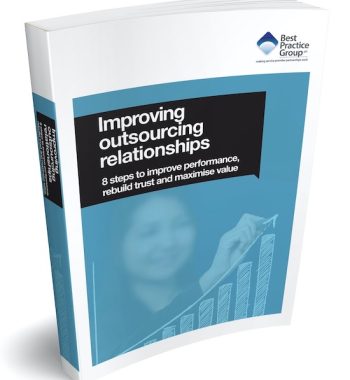 After close to a month of uncertainty it was revealed last week that Daisy Group PLC has entered into an agreement to assume control of 2e2’s datacentre business unit. It was revealed late last month that 2e2 had gone into administration further to failed negotiations to find a solution for its £270m debt issue. While the news of Daisy Group’s involvement does not fully resolve matters for the parties involved, it does represent a step closer to full resolution.
After close to a month of uncertainty it was revealed last week that Daisy Group PLC has entered into an agreement to assume control of 2e2’s datacentre business unit. It was revealed late last month that 2e2 had gone into administration further to failed negotiations to find a solution for its £270m debt issue. While the news of Daisy Group’s involvement does not fully resolve matters for the parties involved, it does represent a step closer to full resolution.
However, one of 2e2’s clients in particular had no patience to wait and see what the outcome of its administration would be, especially in light of the administrators, FTI Consulting, sending letters asking for payments of between £4,000 to £40,000 in order to keep services running. It was revealed two weeks ago that the NHS North Central London cluster of primary care trusts responded to this request by creating their own in-house solution to maintain services put at risk by 2e2’s administration. One can only applaud this proactive measure of disaster avoidance, especially considering that it was taken as a response to FTI’s somewhat unsavoury request for financial assistance.
For those who follow outsourcing news the story has been something of a roller coaster ride — although not of the type that you would personally like to endure. And that brings me to the topic of this week’s post — what the story of 2e2’s administration can teach us about disaster avoidance under similar circumstances. After all, the most ironclad contract is of no use if the provider goes bust, so what can be done to mitigate the fallout under such circumstances? I believe there are three steps that you should take and I explore each one below.
1. Do Your Financial Due Diligence for Disaster Avoidance
As part of any strategic commissioning or outsourcing contract, you must ensure that your provider is financially robust. It can be all too easy to overlook this vital consideration in light of ensuring that the structure and makeup of the contract is in line with your business outcomes, but that makes it no less important.
You should consider the prospective provider’s ability to have the financial resources to be able to follow through on what it proposes to do, along with its overall financial strength. Examine its balance sheet and analyse its assets. Ensure that it has a healthy cash flow. They should also have professional indemnity insurance in place — this will ensure that should the worst happen, the provider’s insurers will be required to compensate you or help to cover the costs of sourcing an alternative supplier. I am not sure if 2e2 had professional indemnity insurance, but if they did then the insurers should be involved in cleaning up the mess.
2. Be Prepared for the Worst
Your preparation for a provider entering administration or going bust should not start when the threat of a provider’s financial uncertainty starts to manifest itself. There should in fact be a plan of action in place in advance, not least because a provider going into administration represents only one potential outcome of a financially weak provider losing a battle against overpowering debts.
For instance, consider the story of Northgate Managed Services, which was put up for sale back in September 2012. That in itself represented a potential major issue for its customers as we discussed in our post on the subject. There are key risks to consider when a provider puts itself up for sale:
- An indefinite hold on capital investment
- Possible reduction in service levels
- Possible reduction in key staff
Furthermore, there are key steps that you should take under such circumstances:
- Keep the pressure on the provider to remedy key problems in service level performance
- Check your contract and ensure the provider (and yourselves) keep on top of your governance actions
- Meet the new owner to discuss any concerns you have about the service levels and take-over
All of these steps should be considered ahead of time — not when it is already too late to jump into action.
3. Always Have an Independent Disaster Recovery Process in Place
Even if you feel that you are in a perfectly stable partnership with a provider, you should always have an independent disaster recovery process in place. In reality an outsourcing partnership could be victim to any number of “disasters,” and as such it would be wise for you to be appropriately prepared with disaster avoidance strategies.
Your disaster recovery process should be truly independent of your provider’s service provision — i.e. it should be administrated by a completely independent provider. That provider should be vetted appropriately; ideally with a healthy handful of references from clients who have actually been through the disaster recovery process (not just contracted with the provider for the possibility).
Furthermore, it is vitally important that you establish a governance process in which your primary and “disaster recovery” provider have an ongoing dialogue relating to any alterations in service provision. If the worst should happen, the transfer of management should be as smooth as possible. The contract with both providers should in fact make clear provisions for communication between the two parties.
Disaster Avoidance – Don’t be a Victim
The 2e2 story is a stark reminder of how there are many ways in which an outsourcing contract can fall to pieces through no fault of your own — it doesn’t just have to be down to service quality and performance. However, for every damaging potential outcome there is a clear process for mitigation and risk reduction.
2e2’s clients are certainly victims in this particular story, but the effect of their provider entering administration may be wide-ranging from case to case, depending upon how prepared each party was for the possibility. And that is how you can effect a reasonable outcome in a situation that can end up almost entirely out of your control.

